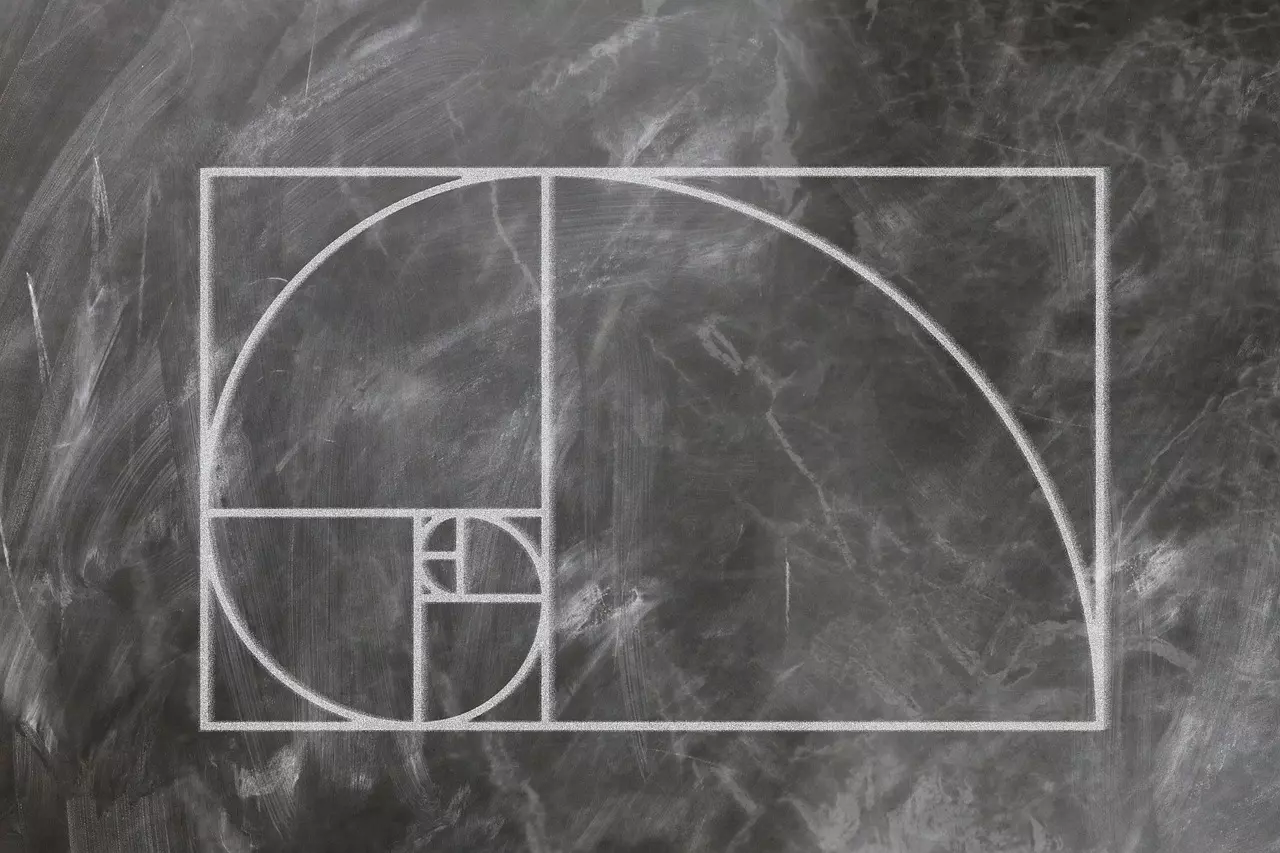The Fibonacci Betting System taps into the power of number sequences to guide betting strategies. Derived from the famous Fibonacci sequence, where each number is the sum of the two preceding ones, this system suggests adjusting bet sizes based on wins and losses. After a loss, the next bet is increased following the Fibonacci sequence, while a win prompts moving two steps back. By harnessing the inherent patterns of numbers, the Fibonacci Betting System aims to optimize betting outcomes.

Roulette: Riding the Fibonacci Wave
Roulette, with its almost even odds on outside bets, serves as a harmonious playground for the Fibonacci system. To navigate this system, players initiate a dance with the Fibonacci sequence. They progress through the sequence with each loss and gracefully step back two numbers upon a win.
However, the Roulette landscape is diverse, with variants like French Roulette offering unique rules such as 'En Prison' and 'La Partage.' These can affect the house edge and may require players to tweak their Fibonacci strategy accordingly. In the face of such elements, the Fibonacci system transforms into a dynamic tool, adapting to the capricious spins of the Roulette wheel.
Roulette, with its simple binary outcomes, provides an excellent platform for deploying the Fibonacci system. Focus on the even-money bets such as Red/Black, Odd/Even, or High/Low.
Key Considerations:
- Recognize that the Fibonacci sequence progresses as follows: 1, 1, 2, 3, 5, 8, 13, and so forth. Each number is the sum of the two preceding ones.
- This system is dependent on streaks; the longer the losing streak, the higher the bet in the next round.
- Be aware of table limits, as a long losing streak can quickly escalate the bet size.
Technical Implementations:
- Your bet size follows the Fibonacci sequence on losing bets.
- If you win, you move two steps backward in the Fibonacci sequence.
- After a winning bet that follows a losing streak, always reset your bet size to the start of the sequence.
Blackjack: Fibonacci Meets Strategy
In the realm of Blackjack, the Fibonacci system encounters a game that blends chance and skill. Just as in Roulette, the Fibonacci journey involves moving forward one step with each loss and stepping back two places with a victory.
Yet, Blackjack is a multi-faceted gem. Its strategic dimensions necessitate a more flexible implementation of the Fibonacci system. Moreover, Blackjack's world is rich with variants, from Spanish 21 to Pontoon, each introducing unique rules and betting opportunities. The Fibonacci strategy must adapt to these variations, morphing to accommodate additional betting options and strategy alterations inherent in each variant.
Blackjack, a game of both luck and skill, offers fertile ground for the Fibonacci system.
Key Considerations:
- The Fibonacci system determines bet sizing, but not the in-game decisions. You should continue to use basic blackjack strategy for these decisions.
- Remember, in blackjack, it's possible to push (tie) with the dealer. In such a case, simply keep your bet the same for the next hand.
- Different blackjack variations may require tweaking this strategy.
Technical Implementations:
- Bet size progression should follow the Fibonacci sequence after each hand.
- With a win, you should move two steps back in the sequence.
- After breaking a losing streak with a win, reset the sequence.
Baccarat: A Fibonacci Affair
In the elegant corridors of Baccarat, the Fibonacci system finds a partner in simplicity. The application here closely mirrors its use in Roulette and Blackjack. Players advance one step in the Fibonacci sequence with each loss and elegantly retreat two steps upon a win.
However, even Baccarat, with its minimalist design, offers distinct versions that necessitate slight strategy modifications. Variants such as Punto Banco introduce unique dynamics that may impact the Fibonacci strategy's efficiency. Thus, even in the simplistic realm of Baccarat, the Fibonacci system emerges as a versatile companion, adjusting its approach based on the nuances of each variant.
Baccarat, with its lower house edge on the Banker bet, makes an ideal match for the Fibonacci betting system.
Key Considerations:
- The Banker bet, with a house edge of just over 1%, is one of the best bets in the casino.
- In Baccarat, ties are a possibility. In the event of a tie, maintain your bet size for the next round.
Technical Implementations:
- Start with a bet size of one unit on the Banker.
- If you lose, progress one step forward in the Fibonacci sequence.
- If you win, move two steps back in the sequence.
Craps: Rolling Fibonacci Dice
Craps presents an exciting environment for the Fibonacci system. Especially when placing Pass/Don’t Pass or Come/Don’t Come bets, Fibonacci can show its worth. As with the previous games, the system progresses with each loss and regresses with a win.
However, the dynamic nature of Craps, with its broad array of betting options and game variants, demands a flexible Fibonacci approach. Unique rules and betting outcomes require subtle strategy shifts, reinforcing the Fibonacci system's adaptive nature.
Craps, with its variety of betting options, can offer strategic depth to Fibonacci system users.
Key Considerations:
- A simple, even-money bet like the Pass Line bet is an ideal candidate for the Fibonacci system.
- Remember, Craps is a game with rounds; a round may consist of multiple rolls.
Technical Implementations:
- Initiate with a one-unit bet on the Pass Line.
- In case of a loss, progress one step forward in the Fibonacci sequence.
- On a win, move two steps back in the sequence.
Video Poker: Drawing the Fibonacci Hand
In Video Poker's high-tech landscape, the Fibonacci system's application becomes slightly more intricate due to the game's inherent diversity in outcomes. Players start with a one-unit bet and navigate the Fibonacci sequence as losses and wins dictate.
Still, the world of Video Poker is rich with variants, each with unique paytables and return-to-player rates. The Fibonacci strategy must adapt to these different variants, showcasing its dynamism in the face of Video Poker's diverse challenges.
Video Poker's blend of luck and strategy can make it an exciting game for Fibonacci system players.
Key Considerations:
- Video Poker allows for strategic decision-making, much like blackjack. The Fibonacci system only influences bet sizing.
- Pay tables can vary significantly between different Video Poker variants, affecting the potential return.
Technical Implementations:
- Begin with a one-unit bet.
- In case of a loss, increase your bet size based on the Fibonacci sequence.
- If you win, move two steps back in the Fibonacci sequence.
In each of these casino landscapes, the Fibonacci betting system dances a delicate ballet of progression and regression, serving as a testament to adaptive gambling strategies. As we've seen, the system's elegance lies in its flexibility, adjusting to the unique rules, odds, and strategic complexities of each game. It's a journey of understanding and adaptation, a journey through the captivating world of casino gaming.
 10 Unconventional Tips for Responsible Gambling in 2024
10 Unconventional Tips for Responsible Gambling in 2024 Have Live Dealer Games Reached Their Full Potential?
Have Live Dealer Games Reached Their Full Potential? 2024 WNBA Playoffs: Preview and Betting Markets
2024 WNBA Playoffs: Preview and Betting Markets Slot Machine Design and Player Psychology Explored
Slot Machine Design and Player Psychology Explored 10 Reasons Why VR Casinos are the Future of Online Casino Gaming
10 Reasons Why VR Casinos are the Future of Online Casino Gaming Sergiu M.
Sergiu M. Melinda E.
Melinda E. Hayley M.
Hayley M.